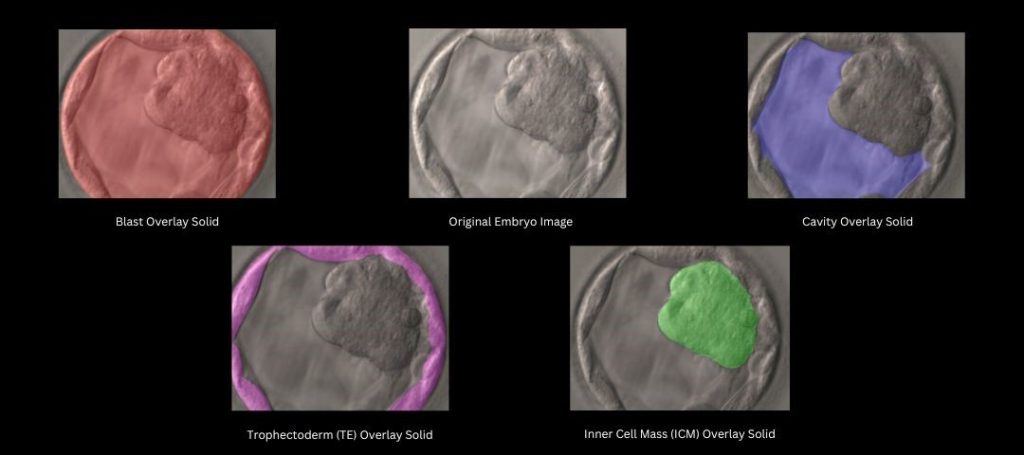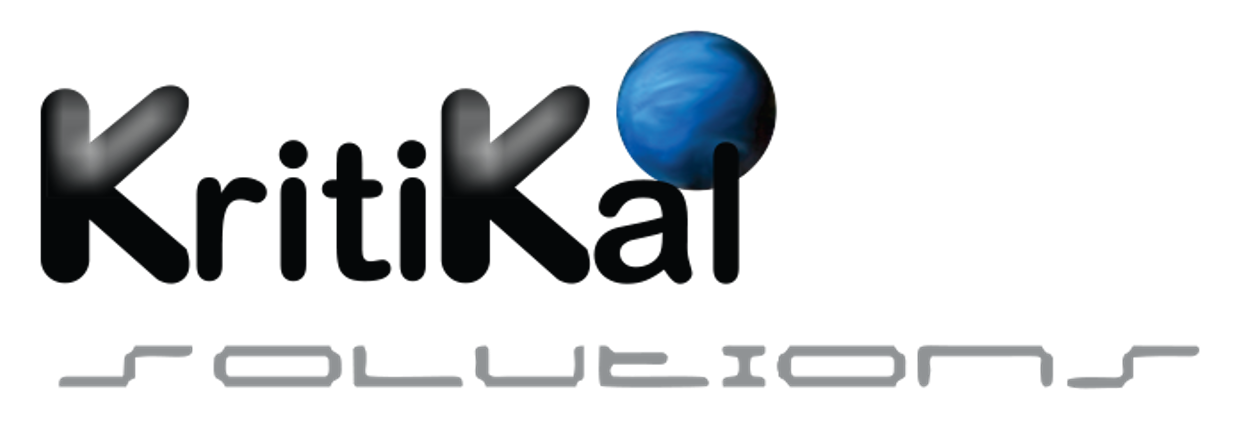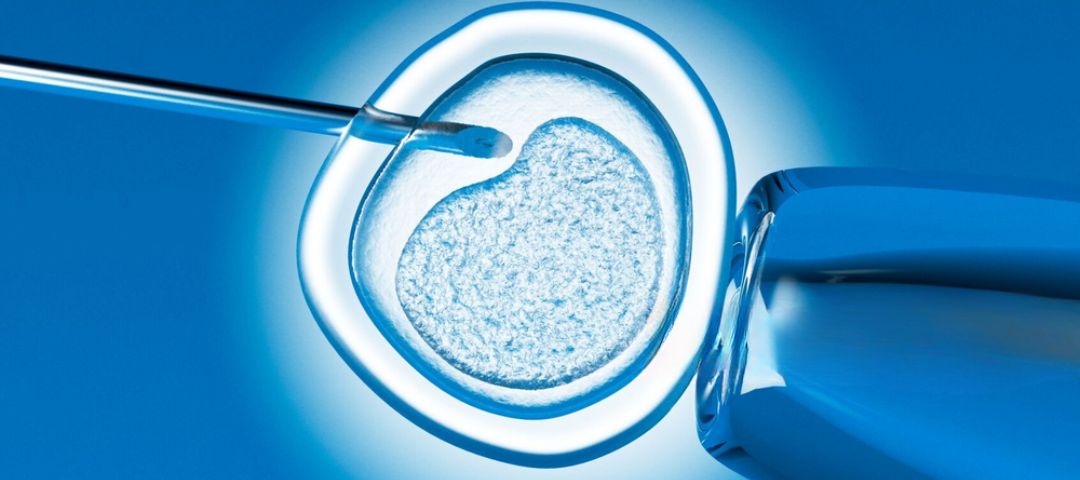The WHO reports one in every six couples globally that are affected by infertility seek intensive Assisted Reproductive Technology (ART) cycles to achieve live birth. Clinicians, laboratory technicians and ART professionals check patient history, health, characteristics and current monitoring results to develop a treatment plan. Although it must be noted that factors, interpretations and weights involved in the deduction of reproducibility are completely human-dependent in this case and require sufficient clinical experience. An accurate ART system driven by Artificial Intelligence (AI) is therefore suited to process and analyze large datasets with multiple outcomes produced during cycles. Such a system can optimize and personalize the key steps involved in ART reproductive technology in a reproducible manner such as drug selection, dosages, oocyte maturation induction, cycle monitoring, competent embryo selection etc. to improve ART efficacy and safety. The Indian IVF industry reached a value of around ₹495 crores as of 2022 and is increasing at a CAGR of 28%.

Growing market size of assisted reproduction treatment in India
Evolution of ART Reproductive Technology
- Pre-19th Century: During early human civilizations, fertility treatments were based on herbal remedies and rituals due to a lack of scientific understanding. In the 4th century BCE, Aristotle theorized about the reproduction process in a rudimentary form.
- 1784: An Italian biologist, Lazzaro Spallanzani conducted artificial insemination in dogs, which was further utilized for animal breeding techniques and human applications.
- 1920s: Understanding of human menstrual cycle and ovulation for developing fertility treatments.
- 1930s: Artificial insemination in humans using donor sperm was first experimented with and performed by Dr. John Rock.
- 1944: Gregory Pincus successfully fertilized a rabbit egg in vitro at the Worcester Foundation for Experimental Biology.
- 1950-60s: In-vitro Fertilization (IVF) experimentation in animals with rabbits, pigs and mammals.
- 1970s: Refinement of IVF procedures using human gametes that is eggs and sperm.
- 1978: Louise Brown, the first baby conceived via IVF (Test Tube Baby) was born on July 25 in the UK through the pioneering IVF work of Patrick Steptoe and Robert Edwards.
- 1980s: Refinement of egg retrieval (aspiration), embryo culturing and freezing (cryopreservation) to improve IVF success rates and the flexibility of ART reproductive technology.
- 1992: Dr. Pallav L. Mehta and Antonio S. S. Kamal introduce Intracytoplasmic Sperm Injection (ICSI) to assist couples with male infertility issues.
- Late 20th Century: Development of preimplantation genetic diagnostic and therapeutic equipment for genetic screening of embryos inheriting chromosomal or genetic disorders.
- 2000s: Refinement of oocyte and embryo freezing and storing with introduction of vitrification that prevents ice crystal formation and increases survival rate of embryos, forming a process called Frozen Embryo Transfer (FET). Further research into reproductive cloning and stem cells.
- 2010s: Commonization of social egg freezing procedure for delaying childbirth for professional reasons. Advent of Clustered Regularly Interspaced Short Palindromic Repeats (CRISPR) technology and gene editing to correct genetic mutations in embryos
Types of Assisted Reproductive Technology
Assisted reproductive technology encompasses various techniques and medical prototype development that are used to aid couples in times of lack of natural conception. These methods mainly involve in vitro handling of eggs, sperm, embryos etc. for treatment of infertility or genetic conditions. They offer options for individuals and couples who are undergoing certain medical treatments, where the choice may depend on the underlying cause of infertility, personal circumstances and professional advice. Given below is an account of different types of ART techniques –
1. In-Vitro Fertilization: Also known as IVF, which is the most common one amongst the types of assisted reproductive technology. It basically involves ovarian stimulation with hormones for the production of multiple eggs and their retrieval process, also known as aspiration. In a similar manner, sperm is collected, and fertilization is conducted in vitro conditions that is in a laboratory dish. The fertilized eggs result in embryos which are cultured for a few days. A healthy and superior embryo is selected before being transferred to a surrogate mother’s uterus for implantation and further growth. This process is commonly used to tackle cases of female infertility caused by blocked fallopian tubes (hydrosalpinx), endometriosis etc. as well as cases of male infertility caused by low sperm count, and/or unexplained infertility.
2. Intracytoplasmic Sperm Injection: It is commonly known as ICSI process and is a variation of IVF. In this case, a single sperm is collected from the ejaculate or surgically retrieved directly from the testicle or epididymis and injected into the female egg to facilitate fertilization and growth in the uterus without the need for any surrogacy. This process is usually selected in cases of male fertility issues such as low sperm count (oligospermia), poor sperm motility (asthenospermia), low sperm quality (oligozoospermia), no sperm in ejaculate (azoospermia) or previous cases of failed IVF.
3. Intrauterine Insemination: The IUI-assisted reproduction treatment involves the placement of sperm directly into the uterus during the ovulation period to increase the chances of sperm reaching the egg and fertilization. It is a less invasive and simpler procedure as compared to ICSI and IVF processes, where sperm is washed, concentrated and inserted into the uterus using a catheter. It is especially useful in cases of unexplained infertility involving oligo/anovulatory infertility, superovulation, male factor or mild male infertility involving abnormal sperm morphology and inability to adequately deliver sperm into the vaginal canal, anatomical concerns such as cervical factor infertility where the cervix prevents sperm from entering the uterus etc.
4. Egg Donation: It involves using eggs from a female donor and fertilization with sperm from the male partner (or sperm donor). The resulting embryo is implanted into the recipient’s uterus which may be a surrogate mother or female partner. This process is used in cases of a female partner with indications of premature ovarian failure or Primary Ovarian Insufficiency (POI), Diminished Ovarian Reserve (DOR) or genetic conditions rendering eggs to be unsuitable for conception. Chromosomal abnormalities such as Klinefelter syndrome, Jacob syndrome, Triple X syndrome, Turner syndrome, Down syndrome, deletion, translation, duplication, inversion, ring abnormalities and aneuploidy. Single gene defects involving mutations or abnormalities within specific genes etc. result in subfertility or infertility.
5. Sperm Donation: As one of the prominent types of assisted reproductive technology, it involves the collection of sperm from a donor for fertilizing an egg via IUI or IVF as per the circumstances. It is useful in cases of male partners with indications of infertility, severe sperm abnormalities, same-sex female couples, conception in single women etc.
6. Embryo Donation: In this process, embryos are developed through natural conception or IVF by the original couple and donated to an infertile couple or another individual. The embryo is thereafter transferred to the recipient’s uterus which may be a surrogate mother or female counterpart of the receiving couple. It is useful in cases where the receiving couple is unable to produce viable embryos, has undergone failed IVF cycles or faces other reproductive health challenges.

Embryo grading and assessment as a part of ART reproductive technology
7. Oocyte Cryopreservation: Commonly known as egg freezing, where eggs are extracted from a woman’s ovaries, frozen and stored for future use. Women can preserve their fertility at a younger age and use the same at a later stage in life for IVF or ICSI. It is a useful ART reproductive technology for women who want to delay childbearing or are undergoing certain medical treatments like chemotherapy that affect fertility, or women with a low ovarian reserve.
8. Sperm Cryopreservation: Commonly known as sperm freezing, this process involves the collection and freezing of sperm for later use such as assisted reproductive procedures like IUI or IVF. It is useful in cases of male infertility, men with certain medical conditions or those who are undergoing treatments like chemotherapy affecting sperm production etc.
9. Ovarian Tissue Cryopreservation: This is an experimental technique where the ovarian tissues are collected, frozen and re-implanted in later stages or used to retrieve eggs. It can be used by patients who are subjected to AI breast cancer detection, post-cancer treatment or whenever they are ready to conceive. It is used by females who are unable to undergo egg freezing procedure or those who wish to preserve fertility before undergoing chemotherapy.
10. Preimplantation Genetic Testing: PGT is an ART reproductive technology that involves genetic testing of embryos prior to uterine transfer during the IVF cycle. Preimplantation genetic screening (PGS), preimplantation genetic diagnosis – monogenic disorder (PGD-M), preimplantation genetic testing – aneuploidy (PGT-A), preimplantation genetic testing – structural rearrangement (PGT-SR) etc. are some of the techniques that fall under this category. It is useful in cases of couples with known genetic disorder, females of advanced maternal age, recurrent pregnancy loss etc. These involve collection of eggs and sperm from intending parents, fertilization and embryonic development in the laboratory. After which, embryonic cells are biopsied at the development stage of 5-7 days post-fertilization and subjected to screening for targeted genetic disorders or chromosomal abnormalities. Healthy embryos are transferred to proceed with implantation to reduce the risk of passing genetic disorders to offspring and increase the chances of successful pregnancy.
11. Gestational Surrogacy: As discussed earlier, this process involves a woman surrogate who carries a pregnancy for another couple or individual. The embryo is developed through IVF and implanted into the surrogate’s uterus for full-term development. It is useful for same-sex male couples and cases where the woman counterpart is unable to carry a pregnancy due to medical reasons such as uterine abnormalities etc. This process is in contrast with the uncommon and ethically complex traditional surrogacy where the surrogate utilizes her eggs to be fertilized with the sperm from the intended father (or sperm donor). Thus, the surrogate is the biological mother of the offspring.
12. Mitochondrial Replacement Therapy: One of the types of assisted reproductive technology is mitochondrial donation/MRT or three-parent IVF. It is used to prevent transmission of mitochondrial diseases such as Leighs syndrome, MELAS (mitochondrial encephalomyopathy, lactic acidosis, stroke-like episodes), MIDD (mitochondrial myopathy with unknown cause), MERRF (mitochondrial encephalomyelitis with ragged red fibers), NARP (non-affected ribosomal protein), LHON (Leber hereditary optic neuropathy) etc. by replacing defective mitochondria from the egg of the mother with a healthy one from a donor egg.
13. Others: Few other techniques include blastocyst culture, which is similar to IVF, but in this case the embryo is allowed to develop for more time to gain as many cells as possible within a week. This assists embryologists to select superior embryos with better implantation potential, which are fewer in number as compared to IVF. It reduces the risk of multiple pregnancies and increases the chances of a successful pregnancy. Another one is a semen preparation technique called Magnetic Activated Cell Sorting (MACS) separates healthy spermatozoa from apoptotic (programmed cell death regulation during spermatogenesis that is sperm cell or spermatozoa development that causes DNA fragmentation and cell damage) or less fertile ones, thus achieving better rates of fertilization, cleaving, implantation and pregnancy. A molecular diagnostic assisted reproduction treatment called Endometrial Receptivity Array (ERA) investigates the receptivity of endometrium by taking a womb lining tissue sample for analysis and successful embryo implantation.
AI Intervention in Assisted Reproduction Treatment
Due to limitations in each of the aforementioned techniques such as the large number of procedure cycles and reduced healthy birth rate, professionals switch to alternative IVF-related data-driven approaches for optimal decision-making and improved outcomes. AI facilitates such methodologies to drive individualized cycle preferences such as algorithmic drug dosing tools, Human-in-the-Loop (HITL), clinical decision support systems (CDSS), clinical trial data analysis for embryo selection and more. Machine Learning (ML) models are capable of learning patterns from such data, drawing inferences and developing models that optimize and personalize ART protocols to obtain a specific result. Supervised methods such as decision trees, linear and logistic regression, k-nearest neighbors, support vector machines, random forests, and different types of neural networks like Artificial Neural Networks (ANNs) etc. have widespread applications with numerical, categorical, tabular data and outcomes in ART. Deep learning comprises of complex multi-layered ANN architectures, for example, Convolutional Neural Networks (CNNs) that can assess spatial data grids such as embryo images.
Examples of unsupervised learning methods such as k-means clustering, Generative Adversarial Networks (GANs) etc. can be used to differentiate between images, while Multimodal generative AI including text generators like ChatGPT, Med-Pal M, and text-to-image generators like DALL-E for 3D embryo modeling etc. are gaining popularity in this field. These can be used for model development and further trained on datasets from different clinics, which may be annotated using image annotation services, validated, evaluated for generalizability. Let us further delve into the AI-enabled ART practices and assisted reproduction treatments –
Treatment Counseling
AI models are trained on population and clinic-specific datasets for producing outcomes related to cumulative live births across different cycles. Instead of completely relying on age stratification, necessary factors like previous IVF cycles, ovarian reserve and response are taken into consideration during training to determine financial risks and chances of successful pregnancy. Large Language Model (LLM)-based two-way messaging AI chatbots are useful for the efficient first phase of infertility assessment.
Ovarian Stimulation
Gonadotropin preparations containing follicle-stimulating hormone (FSH) are used to induce multi- ovarian follicular growth for retrieving multiple oocytes in IVF treatment, although it does not assure oocyte generation, fertilization, embryo development, implantation or live births. By using AI models trained on retrospective datasets, the dosing regimen can be individualized and optimized to maximize follicle number (<!5 oocytes per retrieval process) as per ovarian potential, avoid the risk of Ovarian Hyperstimulation Syndrome (OHSS) and increase the number of 2-pronuclear fertilized embryos (2PNs) and blastocysts for optimal selection.
Oocyte Maturation
Post-stimulation from assisted reproduction treatment, a hormonal triggering agent consisting of 1-methyladenine (1-MA), FSH etc. is administered to prepare follicles for retrieval when they are optimally sized at 12-19 mm. AI/ML techniques like random forest models can optimize Trigger Day by determining follicle size on TD and assist in retrieving the maximum number of mature oocytes of the desired size by considering factors like endocrine and pre-cycle characteristics, estradiol levels, follicle diameters etc. These techniques can assist clinicians in determining the exact TD that is likely to yield the maximum number of 2PNs and blastocysts. This can reduce resource requirements and patient burdens, as through apt predictions conducting IVF cycles in certain settings will be made possible.

Maturation of oocyte through assisted reproduction treatments
IVF Laboratory Applications
AI models can be used for continuous monitoring of embryological development, capturing pictures and alerting professionals regarding abnormalities observed. These models can analyze large amounts of data on IVF cycles, time-lapse images etc. obtained from various branches and conduct non-invasive assessments of sperm, oocytes, gametes and embryos in real-time for healthy live births. This effectively diminishes the need for embryology specialists and reduces the costs involved through automation.
Gamete Assessment
First-line investigations of sperm assessment involve semen analysis of concentration, progressive motility and morphology using AI-based Computer-Aided Sperm Analyzers (CASA) that induce standardization in IVF procedures, effectively differentiate between immobile spermatozoa, particulate debris and avoid under or overestimation of concentration. The ANN-powered technology considers demographic characteristics like age, smoking status, alcohol consumption, urbanization, occupation, presence of seminal plasma biochemical markers etc. for fertilization prognosis. AI software can analyze correlations between kinetic motility patterns, fertilization likelihood, blastocyst formation, sperm morphology (head, acrosome, vacuole or whole using CNNs) for avoiding cytotoxic staining of frozen sperm by using 400-600x low magnification and successful IVF procedure. CNNs are capable of detecting sperm in testicular biopsies accurately by considering hormonal, genetic, demographic and urogenital factors, seminal plasma microRNA biomarkers etc. Other common applications include DNA integrity prediction, AI-augmented Sperm Chromatin Dispersion (SCD) test kits, resulting in reduced DNA fragmentation counting, usage of different stains, microscopes, assays and inter-variable outcomes between embryologists.
As a part of ART reproductive technology, automated oocyte assessment does not require removal of cumulus for observing extruded polar body, rather assessing cytoplasmic and nuclear maturity in a non-invasive manner for increasing chances of live births in the case of cryopreserved oocytes. This may involve training CNN models with GAN-generated synthetic images and considering predictors (BMI, endometriosis, follicular fluid markers, insulin-like growth factor, zinc levels etc.) for observation of morphological features like presence of vacuoles, perivitelline space, granularity, mitochondrial functions etc. and successful implantation post-fertilization to form 2PNs or zygotes. For example, VIOLET, MAGENTA etc., employ 2D oocyte images for prediction of clinical pregnancy. ML models also perform non-invasive gene expression tests to predict oocyte quality and embryo development as per cumulus cells for guiding donor oocyte cycles. It is especially useful in countries like Poland, where regulations in healthcare facilities allow fertilization of 6 oocytes per cycle, or Germany where only 3 oocytes may be cryopreserved per attempt.
Embryo Assessment
AI-driven morphological assessment of embryos and non-invasive aneuploidy assessment are some more types of assisted reproductive technology that can assist in predicting development post-implantation and live birth potential. Time-series ANN models trained on morphokinetic data like cytoplasmic movements can predict blastocyst formation and cleavage stages. High-precision and reproducible CNNs can accurately and swiftly classify pronuclei size and arrangement to monitor embryonic development. Deep learning-based models like iDAScore can utilize time-lapse images for generating automated assessment outcomes without concurrent annotation. They can also be integrated in incubation systems for monitoring and selecting embryos, for example, biomarker-scoring CDSS called CHLOE considers factors like diameter, degree, expansion time etc. for determining the same. As for PGT-A, a non-invasive AI-enabled assessment can be done without embryo manipulation or biopsy, and CNNs are used to predict ploidy status based on morphokinetic patterns in large multi-center datasets. Furthermore, metabolomic embryonic signatures or omics left in spent culture media can be assessed by AI-driven predictive models for reproductive potential. AI is also driving collaboration between ART clinics and focused research groups.
Explore New Frontiers in ART Refinement with KritiKal
AI models, combined with clinicians’ expertise and large datasets, offer potential to improve clinical outcomes in ART. In this blog, we explored current AI applications, their future potential, and the need for prospective validation across diverse populations. For AI to be effectively integrated into clinical practice, it must address workload management, standardize gamete assessment, and improve embryo selection. External validation and large-scale studies are necessary for broader adoption as well.
KritiKal has uplifted various IVF centers and ART giants in assisting couples who were at risk of having abnormal embryos due to various genetic conditions and otherwise. With its state-of-the-art AI-powered embryo grading platform, it has assisted embryologists in successful embryo selection, reducing the risks of implantation failure, miscarriages, biochemical pregnancy, fetal death, stillbirths or offspring with abnormalities. Please get in touch with us at sales@kritikalsolutions.com to know more about our embryo grading solution which generates in-depth embryo analysis reports and alerts for successful ART.
References

Ridhi Bansal currently works as a Software Engineer at KritiKal Solutions. She is proficiently skilled in OpenCV, Django, MySQL, Git, Algorithmic Toolbox, Object-Oriented Programming and more. With her ability to work efficiently in teams, she has assisted KritiKal in delivering various projects to some major clients.



 Global
Global  United States
United States 
